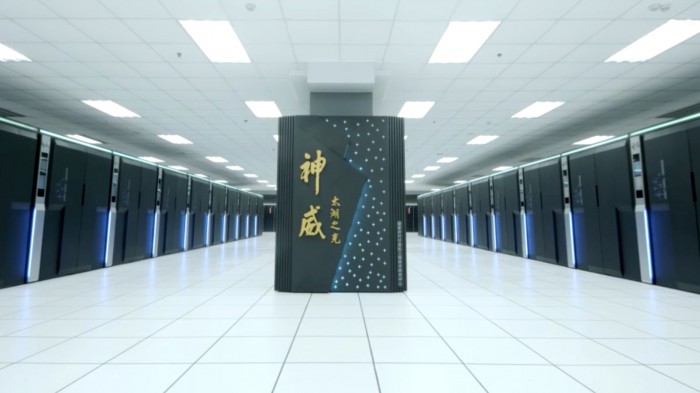The New Fastest Supercomputer Is Chinese Through and Through
A homegrown Chinese machine called Sunway TaihuLight has been declared the world's fastest supercomputer.
Housed in the National Supercomputing Center in Wuxi, China, TaihuLight is capable of performing 93 quadrillion calculations per second. That makes it three times faster than the previous number one, Tianhe-2—also from China—which achieves speeds of 33 quadrillion calculations per second.
TaihuLight uses 41,000 chips, each with 260 processor cores, to give it a grand total of 10.65 million cores. There’s also 1.3 petabytes of RAM—slightly less than Tianhe-2. The new computing champ is more efficient than its predecessor, too, drawing 15.3 megawatts of power, compared to 17.8 megawatts.

Today’s news also delivers two blows to American supercomputer dominance. Notably, it's the first time that more of the world’s top 500 supercomputers are Chinese than American. China now boasts 167 systems in the rankings, while the U.S. has 165. No other country rivals either nation: third on the list is Japan, with 29 systems.
Even more striking is the fact that TaihuLight doesn’t rely on Western hardware. In the past, the world’s fastest supercomputers have been built using U.S.-designed chips, with hardware from Intel or International Business Machines, or else silicon manufactured under license from Sun Microsystems. TaihuLight, however, uses Chinese-made processors.
In fact, the supercomputer was funded by China’s 863 program, sometimes known as the State High-Tech Development Plan. The program was set up in 1986 by the government of the People's Republic of China, with the aim of growing the nation’s domestic technology sectors and making China independent of other countries for its hardware.
To date, China’s wider chip business has lagged behind that of the U.S. and far, far behind those of Japan and South Korea. But in March the country announced it was investing $24 billion into its home-grown semiconductor industry. The state-owned chip maker XMC is already building facilities that will manufacture NAND flash-memory and DRAM chips, the first of which is expected to be operational in 2017.
Its supercomputer ambitions show no signs of leveling off, either. Earlier this year, Chinese officials claimed that they plan to build a machine that can perform at least a quintillion operations per second by 2020—10 times that of TaihuLight.
(Read more: Bloomberg, Wall Street Journal)
Keep Reading
Most Popular
Large language models can do jaw-dropping things. But nobody knows exactly why.
And that's a problem. Figuring it out is one of the biggest scientific puzzles of our time and a crucial step towards controlling more powerful future models.
The problem with plug-in hybrids? Their drivers.
Plug-in hybrids are often sold as a transition to EVs, but new data from Europe shows we’re still underestimating the emissions they produce.
Google DeepMind’s new generative model makes Super Mario–like games from scratch
Genie learns how to control games by watching hours and hours of video. It could help train next-gen robots too.
How scientists traced a mysterious covid case back to six toilets
When wastewater surveillance turns into a hunt for a single infected individual, the ethics get tricky.
Stay connected
Get the latest updates from
MIT Technology Review
Discover special offers, top stories, upcoming events, and more.